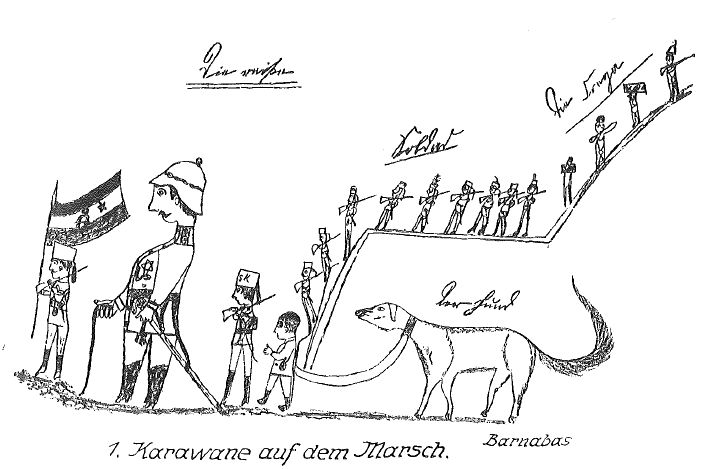Research Highlights
Here follows a selection of projects which the researchers at D-GESS are concerned with at the moment
The construction of public images of ‘Indian famine victims’ in colonial, nationalist & global discourses on humanitarian relief

During the first half of the twentieth century, a growingly diverse set of actors from in and outside India responded to famine in the subcontinent. After the “late Victorian holocaust” had rendered famine in India a global news item with images of emaciated bodies unsettling foreign audiences in the nineteenth century, in the early twentieth century the British regime in India tried to convince the world that it had defeated famine in its colony. The hunger in India however continued to haunt the population in guise of local famines, malnutrition and a gnawing food deficit.
Images and stories of hunger and famine in India were used by relief committees to collect donations and to raise awareness for the hunger in India. Due to the political nature of hunger that enabled groups to delegitimize ruling elites, depictions of famine and starvation were likewise linked to political demands and societal reforms. The project sets out to investigate publicity campaigns of relief actors and advocacy groups, to explore the role of the media in arousing public attention and to illuminate forms and practices established in contemporary depictions of the Indian hunger. The dissertation thereby aims to highlight the formation of networks that emerged in response to famines in India and to explore how the Indian hunger was discussed in debates that were increasingly transnational in scope.
Web: www.gmw.ethz.ch
Everyday Life and Everyday Resistance of East African Porters in European Expeditions

During the second half of the 19th century, a dense network of trade routes spread over the colony German East Africa (the present-day countries of Tanzania, Burundi, and Rwanda) with large caravans and expeditions operating on it. Their burden rested on human shoulders.
The research project attracts notice to these porters. It examines their social everyday life in European expeditions around 1900. Even though the life was characterized by coercion and violence, the porters were not sheer victims of the European colonizers. They designed strategies with which they opposed the colonial rule, among them strikes and desertions.
The agency of porters could become life-threatening for European travelers. Through mass desertions, expeditions could be paralyzed for months somewhere in the African interior. The colonial administration of German East Africa proclaimed that the caravan trade was the biggest hindrance to the economic exploitation and to the so-called “civilization” of East Africa. Through various means, e.g. the extension of infrastructure, the administration tried to come to grips with the problem from the 1890s onwards.
The research project thus considers European expeditions as spaces of negotiation where relations between master and servant were simultaneously constituted and called into question. It shows that the porters’ unruly behavior reverberated beyond the microcosm of expeditions and led to large-scale projects such as railroad constructions. Hence, the case of East African caravan porters is an example of how local ‘ordinary’ actors could shape colonial policy making from the margins.
Web: www.gmw.ethz.ch
Human capital

Human capital is a key ressource in our modern knowledge-based society. Corporations and schools as well as international organisations, such as OECD or the World Bank, are involved in its production, evaluation and optimisation. The flexible application and individual increase of human capital are considered to be elements of corporate competitiveness. Through assessments, employment and qualifying examinations, the concept of human capital has become a reality-shaping deployment for many people in everyday life.
DownloadFor further details (PDF, 2.1 MB)vertical_align_bottom
Web: www.tg.ethz.ch
No place to go
Urban sanitation conditions in Kampala’s low-income areas
Results of a representative survey conducted with 1’500 poor households in Uganda’s capital during November 2010 show that the majority of Kampala’s urban poor have access to on-site sanitation facilities. Despite the widespread accessibility to sanitation, the conditions of many facilities are unsatisfactory due to the generally large number of users per stance.
This leads to low hygienic standards and waiting times for toilet users. As a result, “flying toilets” is (at least occasionally) still a common practice among the urban poor, and many toilets are abandoned after a relatively short time - thus questioning the true level of sanitation access in Kampala’s low-income areas. Household investment in good-quality on-site facilities is discouraged by the lack of property rights and high prices, often exceeding the average annual per capita income in Kampala’s poor settlements.
DownloadFor further details (PDF, 2.8 MB)vertical_align_bottom
Web: www.nadel.ethz.ch
